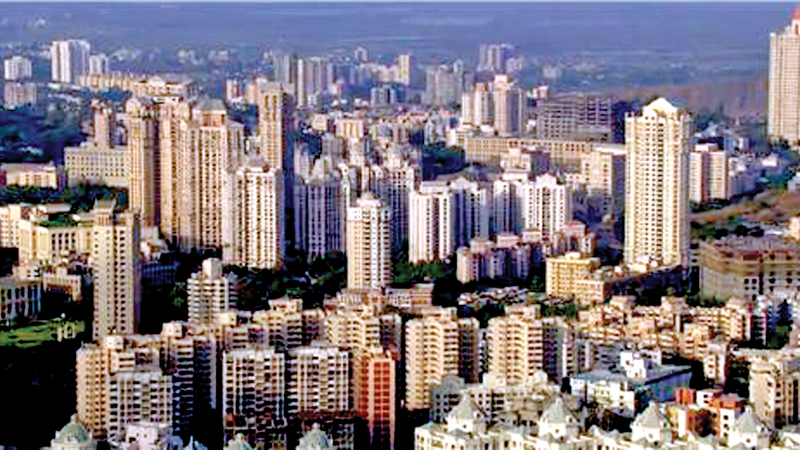There are, in India today, two contrasting views on the state of the economy. There is a rosy, sectional, view projected by the Government and the mainstream right wing media. And there is another which is more holistic and therefore more balanced. The latter is voiced by left wing academics and intellectuals, who use the alternative liberal media to get their point across.
Both lines of thinking have facts to back them. However, India would do well to strike a balance between euphoria and a sincere acknowledgement of the need for a more grounded and holistic approach to economic development.
Melissa Cyrill writing for India Briefing (brought out by Dezan Shira and Associates) begins her latest assessment on a cautious note, saying that India’s economic outlook for 2025-26 is “moderate growth”, with GDP projections ranging between 6.4 percent and 6.6 percent. The Reserve Bank of India (RBI)’s projection for the Financial Year (FY) 2024-25 is also 6.6 percent. This is a satisfactory rate of growth, though India should grow at 8 to 9 percent to meet its ambitious targets.
Inflation is a significant concern, with its adverse impact on demand and consumption. Cyrill quotes Devendra Kumar Pant, Chief Economist at the India Ratings and Research, to say that the overall demand would remain subdued unless inflation stabilises around 4 to 4.5 percent. In December, the RBI itself pointed to subdued manufacturing activity in the Second Quarter (Q2) of FY 2024-25. Petroleum products, iron, steel, and cement, mining and electricity had registered subdued demand, RBI said.
Encouraging signs
Despite satisfactory growth, India is looking at 2025 with some trepidation because of the proverbial uncertainties of the weather which impacts agricultural output. And there are global factors beyond its control, such as tariff changes (as threatened by US President-elect Donald Trump) and variations in world commodity prices.
India Briefing has not been oblivious to encouraging features in India’s development. The steady growth in the services sector, manufacturing, rapid digitisation and ICT-led innovation, diversification of export markets, and the continued push for infrastructure development should stand India in good stead in 2025, it says.
The manufacturing sector comprising precision engineering, robotics, and R&D-driven manufacturing is poised for growth. But industries will require significant private capital and support for product innovation. Geopolitical developments present India with an opportunity to upscale its industrial capabilities and play a more substantial role in global value chains. For this, India should dismantle some of its protectionist structures and self-created geopolitical barriers. The Government’s investment in infrastructure development is healthy, estimated to be US$ 133.86 billion for the 2024-25 fiscal year, which is an 11.1 percent increase from the previous year.
In terms of exports, Indian firms are keen to grow in electronics, electrical equipment, footwear, textile, garment, furniture, automotive parts, toys, and chemicals, especially in the light of expected Trump-led US’ tariff hikes on Chinese goods. In 2023-24, India’s exports of goods and services stood at US$ 778 billion. Exports are expected to cross US$ 800 billion in FY25. The goal is to reach US$ 2 trillion by 2030. But high import duties on components could increase production costs. There is also a shortage of skilled labour and delays in labour law reforms which are pulling down growth.
India’s defence exports in 2023-24 were approximately US$ 2.63 billion, a 32.5 percent increase from the previous year, and a 31-fold increase from 2013-14. Growth in this sector is projected to hit US$ 130 billion over the next five years.
The financial services sector is active, fuelled by digital adoption. The expansion of digital banking, rising lending activity, and strong credit demand are important growth drivers, Cyrill said. Fintech companies are poised to benefit significantly as more consumers transition into the financial mainstream digitally.
“Quick commerce” which has experienced exponential growth in recent years, continues to transform the retail landscape. Quick commerce is about fast deliveries, usually within an hour. Indian Quick commerce service providers have expanded into electronics, fashion, beauty products, and even niche areas like pet care and sports goods. A compound annual growth rate of 50 percent is expected in the Quick Commerce market.
India’s green energy prospects for 2025 are promising, with significant growth anticipated in solar and wind power. India Briefing says that the country aims to add approximately 35 GW of capacity to the grid by the end of the fiscal year 2025. However, challenges remain in managing large-scale grid integration, land acquisition, and expanding domestic manufacturing capacity for renewable components and minimise the great dependence on China for intermediate inputs.
Market investment
According to Statista, India’s data centre market investment is projected to reach US$ 4.6 billion by 2025. A data centre is a physical facility that stores and processes data, and provides access to resources for businesses.
India’s data centre market is set to see under-construction capacity additions of 1.03 GW by 2028, with planned expansions contributing an additional 1.29 GW, bringing the total projected capacity to 3.29 GW by 2028. Data centre capacity is measured by the use of power, space, cooling, computing resources and networking. Growth prospects here will be stronger if India focuses on advancing 5G infrastructure, AI, cybersecurity, and digital governance.
The expanding market is fuelling demand for data centre infrastructure, including IT systems, electrical and mechanical equipment, and general construction services. Major foreign investors in India’s data centre market include Amazon, Microsoft, Alphabet (Google), Cloudflare, Equinix, and Japan’s Nippon Telegraph & Telephone (NTT).
In the realm of healthcare, the Indian market is projected to hit US$ 285 billion by 2028. The Indian healthcare sector has seen significant investment growth, post-pandemic, attracting an investment of US$ 5 to 6 billion annually. The addition of 140 million middle-class households by 2030 will drive a substantial increase in healthcare spending.
India’s medical tourism expanded by 33 percent in 2023, surpassing pre-pandemic levels in 2024, driven by the Government’s e-medical visa initiative for nationals from 167 countries. But India will need an additional 3.6 million hospital beds, three million doctors, and six million nurses by 2034 to meet global healthcare standards, India Briefing said.
However, optimism about India’s economic prospects must be tempered by its inability to address some key challenges, says economist Jayati Ghosh writing in The Hindu.
The first is unequal distribution of the benefits of rapid economic growth, which have thus far, accrued predominantly to the top 10 percent, who own 77 percent of the country’s wealth, and the top 1 percent own 40.1 percent.
In 2024, India’s per capita income was just US$ 2,698. China’s was US$ 25,015.
“India’s failure to release any consumption figures since 2011-12 has made it difficult to produce reliable estimates of potential increases in inequality and poverty. Such estimates rely heavily on consumer expenditure surveys, typically conducted every five years. But Government scrapped the 2017-18 survey because the findings did not align with its preferred narrative,” Ghosh said.
“Moreover, the decennial census, which was meant to be completed in 2021, has been postponed indefinitely. Consequently, neither the Government nor citizens know how many people there are in India, where they live, or their living conditions and employment status,” she added.
“Various indicators suggest that the incomes of top earners have increased sharply while the wages of most workers, especially those in the bottom half of the distribution, have stagnated or declined,” Ghosh said.
Unemployment
The second major challenge facing India is that rapid GDP growth has not created enough jobs to accommodate its youthful population. Ghosh said that Indía’s worker-to-population ratio has declined from 38.6 percent in 2011-12 to 37.3 percent in 2022-23. Official statistics also show that the female workforce participation rate has fallen to just 20.8 percent. In 2022-23, 48 percent of men in India were engaged in paid employment, compared to just 13 percent of Indian women, resulting in one of the world’s lowest female workforce participation rates. Real wages have remained largely stagnant over the past decade. Among agricultural workers, real wages actually declined between 2014-15 and 2021-22.
About half of India’s workforce remains employed in low-productivity sectors that account for just one-fifth of national income. Consequently, mass consumption has remained constrained. This contributed to a sharp decline in domestic investment, which fell from a peak of 42 percent of GDP in 2006-07 to roughly 31 percent in 2022-23, Ghosh said.
Basic human-development indicators, particularly those related to nutrition, have remained poor and even worsened in recent years, related to low public spending on health, education, and social protection. Without far-reaching reforms aimed at boosting employment, guaranteeing living wages and promoting health, India will struggle to achieve genuine economic success, Ghosh added.







